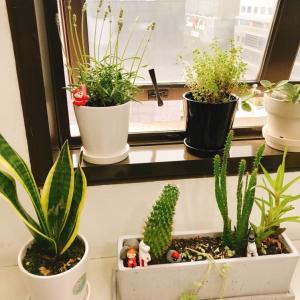Article
atastybellpepper
2022-06-28

The Field Guide to Urban Gardening by Kevin Espiritu of Epic Gardening is a really useful resource to help you determine what you need with your space restrictions and particular growing conditions if you're looking to turn your balcony into a lush garden—or even if you only have a small patio space. The Quarto Group and Cool Springs Press contributed this passage from a book about starting a balcony garden.
Growing things on your balcony adds beauty to an otherwise unappealing area. Additionally, you may complete the following tasks:
-Grow living barriers to reduce noise pollution
Make it more difficult for pests to get your garden. Provide some food for yourself to cut down on your "food miles."
Create a garden on your balcony.
When growing on a balcony, your first concern should be if the balcony can sustain what you're producing. The majority of balconies should be strong enough to support a few pots or beds, but it's a good idea to evaluate your area first before you start filling it with plants.
When a container is laden with soil, water, and a tomato plant, particularly if you have a lot of them, you'd be astonished at how heavy it can get. Instead of placing all of your pots in one spot on your balcony, spread them out. By doing this, the weight distribution will be more evenly distributed, preventing any unpleasant balcony gardening accidents.
Examine the horticultural conditions on your balcony.
Sun
Which way does the balcony on your house face? The ideal balconies are those facing south, although those facing southeast or southwest can also work. And you can still grow plants if your window faces north. All you have to do is change the kinds you plant to ones that like shade.
Shade
Before establishing your garden, Kevin advises checking out the balcony in the morning, afternoon, and evening to observe how the shadows affect the area. When you set up a balcony garden, you often discover that you put the plants in a spot that is shadowed for 80% of the day by an obstruction.
For guidance on where to place your garden, pay attention to how shadow affects your balcony.
Wind
The major concern with balcony gardens is the wind, much more so than with raised beds or containers on the ground. Planting wind-resistant vegetation, like rosemary, is your first choice. Stake your plants firmly and use windscreens to assist break some of the stronger gusts as a second, more adaptable alternative.
Walk outside a few times during the day to check the direction and strength of the wind, similar to monitoring the shade on your balcony. Use pots that can withstand more wind, such terra-cotta ones, if your area experiences a lot of it.
addressing water drainage
The majority of balconies feature drainage holes or are at the very least slanted so that water flows in one direction. The last thing you want to do is irritate a downstairs neighbor by watering the garden every time it rains filthy water on them while you're growing on a balcony.
Installing a balcony rain barrel can increase your conservation score if you live in a rainy location. By doing this, you avoid wasting large quantities of runoff and get to irrigate your garden with pure rainwater, which is always better than using municipal water.
Design of a balcony garden
Since every balcony is different, your urban gardening masterpiece should be adapted to your surroundings. Having said that, there are certain fundamental guidelines to adhere to in order to design a balcony garden that is beautiful, useful, and—best of all—productive. Considerations for balconies fall into three categories: the floor, the railing, and everything else. You may use your available space to the fullest extent by thinking in these three tiers.
How to handle the balcony's floor
The floor of your balcony is a terrific place for bigger pots full of plants that require a little room to flourish provided you're ready to give up some foot space. Beans, tomatoes, peppers, eggplants, and other vegetables grow well in pots on the balcony floor. They'll effectively fill up the gap over time.
installing pots on the balcony railing
The most beautiful part of your balcony garden is where your railings are. Since they dangle out the balcony, they get the maximum solar exposure while taking up the least amount of room. Balcony railing planters are one of the most difficult pieces of gardening equipment, despite their usefulness. It might be difficult to know precisely how to connect plants to railings since there are so many different kinds of railings. The last thing you want to do is haphazardly connect a railing planter just to watch it tumble down to the earth below given how much wind balconies are prone to.
Sitting planters
You can often get planters with a bottom that is just that size if your rails are a regular dimension. If you want to choose a plug-and-play solution, these are fantastic possibilities. Simply fill them with dirt, put them in pots, and they'll begin to grow. These may not be the greatest option if your balcony experiences a lot of wind since they can fly off, particularly as the soil becomes dry and the planter becomes lighter.
planters with screws on top
Although they lack a notched bottom, these varieties are identical to sit-on-tops. These work well with wood since they screw right into the railing.
planters that attach
They feature a hook design to attach around the railing and are the most popular kind of railing planters. The planter then leans on the edge of the railing while straining against its own weight. If you are certain that the design will match your railing, they are excellent choices.
It might be difficult to first choose which railing style would go with your balcony since there are so many variations on this design. Compare the width of your fence to the dimensions of the planter box's hook or connection.
simplifying balcony garden maintenance
Balcony gardening is appealing since it's a simple process to get started with, but with the following advice, it's a breeze.
not seeds, but seedlings
If you purchase seedlings from a nearby nursery and simply transfer them into your balcony garden, it is simpler to get your garden off to a good start. If you want to exercise your gardening skills, starting seeds is undoubtedly a fun alternative to attempt. However, if you're a novice gardener and want to see results quickly, purchase seeds from a nearby nursery.
Greater container size
The fact that you're growing in pots is the main drawback of balcony gardening. Particularly if you're using terra cotta pots, they dry up rapidly. Choose the biggest containers you can to help offset this and provide your plants with the consistent hydration they need. The soil will be able to store more water and evaporate much more gradually because to the increased volume.
Put self-watering pots to use.
Choosing bigger, self-watering containers is a step up from selecting larger containers. To provide a steady supply of water for the roots of your plants, these containers wick water from a chamber at the bottom of the pot. Large self-watering pots are often available at nurseries or big-box retailers, but you may also make your own following the instructions in Kevin's book. The time you'll save not having to water your plants is definitely worth the additional expense.
For a balcony garden, simple plants
A balcony garden just really needs one thing: nothing that will completely take over the area. For instance, sprawling squash plants wouldn't be the ideal option. However, even squash is feasible. The following list of plants, however, includes several that are more appropriate for enhancing a balcony.
Basil, sage, thyme, oregano, and other herbs
Grassy leaves: Leaf lettuce, kale, spinach, and other vegetables
"Artichoke" and "Silverskin" garlic
"Patio Princess" and "Balcony"
"Green Oak Leaf" and "Black Seeded Simpson" lettuce
Cayenne: "Camelot"
Eggplant: "Bambino" and "Fairy Tale"
Rainbow and Rhubarb varieties of Swiss chard
Beans: "Purple Queen" and "Blue Lake" (pole) (bush)
Watermelon: "Spacemaster 80"
Strawberry: "Seascape" and "Ozark Beauty"
Growing things on your balcony adds beauty to an otherwise unappealing area. Additionally, you may complete the following tasks:
-Grow living barriers to reduce noise pollution
Make it more difficult for pests to get your garden. Provide some food for yourself to cut down on your "food miles."
Create a garden on your balcony.
When growing on a balcony, your first concern should be if the balcony can sustain what you're producing. The majority of balconies should be strong enough to support a few pots or beds, but it's a good idea to evaluate your area first before you start filling it with plants.
When a container is laden with soil, water, and a tomato plant, particularly if you have a lot of them, you'd be astonished at how heavy it can get. Instead of placing all of your pots in one spot on your balcony, spread them out. By doing this, the weight distribution will be more evenly distributed, preventing any unpleasant balcony gardening accidents.
Examine the horticultural conditions on your balcony.
Sun
Which way does the balcony on your house face? The ideal balconies are those facing south, although those facing southeast or southwest can also work. And you can still grow plants if your window faces north. All you have to do is change the kinds you plant to ones that like shade.
Shade
Before establishing your garden, Kevin advises checking out the balcony in the morning, afternoon, and evening to observe how the shadows affect the area. When you set up a balcony garden, you often discover that you put the plants in a spot that is shadowed for 80% of the day by an obstruction.
For guidance on where to place your garden, pay attention to how shadow affects your balcony.
Wind
The major concern with balcony gardens is the wind, much more so than with raised beds or containers on the ground. Planting wind-resistant vegetation, like rosemary, is your first choice. Stake your plants firmly and use windscreens to assist break some of the stronger gusts as a second, more adaptable alternative.
Walk outside a few times during the day to check the direction and strength of the wind, similar to monitoring the shade on your balcony. Use pots that can withstand more wind, such terra-cotta ones, if your area experiences a lot of it.
addressing water drainage
The majority of balconies feature drainage holes or are at the very least slanted so that water flows in one direction. The last thing you want to do is irritate a downstairs neighbor by watering the garden every time it rains filthy water on them while you're growing on a balcony.
Installing a balcony rain barrel can increase your conservation score if you live in a rainy location. By doing this, you avoid wasting large quantities of runoff and get to irrigate your garden with pure rainwater, which is always better than using municipal water.
Design of a balcony garden
Since every balcony is different, your urban gardening masterpiece should be adapted to your surroundings. Having said that, there are certain fundamental guidelines to adhere to in order to design a balcony garden that is beautiful, useful, and—best of all—productive. Considerations for balconies fall into three categories: the floor, the railing, and everything else. You may use your available space to the fullest extent by thinking in these three tiers.
How to handle the balcony's floor
The floor of your balcony is a terrific place for bigger pots full of plants that require a little room to flourish provided you're ready to give up some foot space. Beans, tomatoes, peppers, eggplants, and other vegetables grow well in pots on the balcony floor. They'll effectively fill up the gap over time.
installing pots on the balcony railing
The most beautiful part of your balcony garden is where your railings are. Since they dangle out the balcony, they get the maximum solar exposure while taking up the least amount of room. Balcony railing planters are one of the most difficult pieces of gardening equipment, despite their usefulness. It might be difficult to know precisely how to connect plants to railings since there are so many different kinds of railings. The last thing you want to do is haphazardly connect a railing planter just to watch it tumble down to the earth below given how much wind balconies are prone to.
Sitting planters
You can often get planters with a bottom that is just that size if your rails are a regular dimension. If you want to choose a plug-and-play solution, these are fantastic possibilities. Simply fill them with dirt, put them in pots, and they'll begin to grow. These may not be the greatest option if your balcony experiences a lot of wind since they can fly off, particularly as the soil becomes dry and the planter becomes lighter.
planters with screws on top
Although they lack a notched bottom, these varieties are identical to sit-on-tops. These work well with wood since they screw right into the railing.
planters that attach
They feature a hook design to attach around the railing and are the most popular kind of railing planters. The planter then leans on the edge of the railing while straining against its own weight. If you are certain that the design will match your railing, they are excellent choices.
It might be difficult to first choose which railing style would go with your balcony since there are so many variations on this design. Compare the width of your fence to the dimensions of the planter box's hook or connection.
simplifying balcony garden maintenance
Balcony gardening is appealing since it's a simple process to get started with, but with the following advice, it's a breeze.
not seeds, but seedlings
If you purchase seedlings from a nearby nursery and simply transfer them into your balcony garden, it is simpler to get your garden off to a good start. If you want to exercise your gardening skills, starting seeds is undoubtedly a fun alternative to attempt. However, if you're a novice gardener and want to see results quickly, purchase seeds from a nearby nursery.
Greater container size
The fact that you're growing in pots is the main drawback of balcony gardening. Particularly if you're using terra cotta pots, they dry up rapidly. Choose the biggest containers you can to help offset this and provide your plants with the consistent hydration they need. The soil will be able to store more water and evaporate much more gradually because to the increased volume.
Put self-watering pots to use.
Choosing bigger, self-watering containers is a step up from selecting larger containers. To provide a steady supply of water for the roots of your plants, these containers wick water from a chamber at the bottom of the pot. Large self-watering pots are often available at nurseries or big-box retailers, but you may also make your own following the instructions in Kevin's book. The time you'll save not having to water your plants is definitely worth the additional expense.
For a balcony garden, simple plants
A balcony garden just really needs one thing: nothing that will completely take over the area. For instance, sprawling squash plants wouldn't be the ideal option. However, even squash is feasible. The following list of plants, however, includes several that are more appropriate for enhancing a balcony.
Basil, sage, thyme, oregano, and other herbs
Grassy leaves: Leaf lettuce, kale, spinach, and other vegetables
"Artichoke" and "Silverskin" garlic
"Patio Princess" and "Balcony"
"Green Oak Leaf" and "Black Seeded Simpson" lettuce
Cayenne: "Camelot"
Eggplant: "Bambino" and "Fairy Tale"
Rainbow and Rhubarb varieties of Swiss chard
Beans: "Purple Queen" and "Blue Lake" (pole) (bush)
Watermelon: "Spacemaster 80"
Strawberry: "Seascape" and "Ozark Beauty"
0
0
Growing
kensong
2018-06-16

I've sent one of these to plant heaven. One of the first plant that sparked my interest in gardening. Second around I'm determined to keep them thriving.
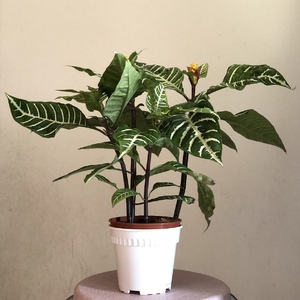
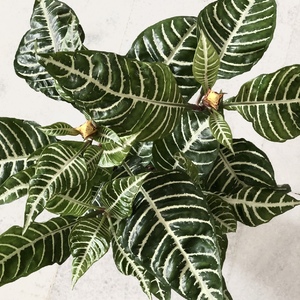


0
0
Help
kaylawolfe97
2018-04-06

I'm not sure what kind of plants these are I'm extremely new to gardening to help with my anxiety and depression and I really don't want to mess up, knowing what kind of succulents/cacti I am caring for seems to be good start, also I don't have and pots for them so I kind of just put them in some tin cans 😂
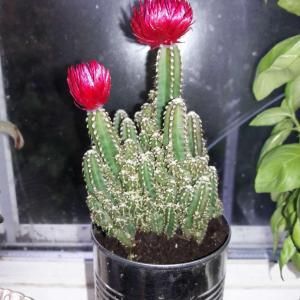
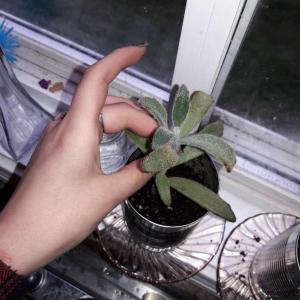


1
0
meriunkat: I feel like I bought mine for the same reason unconsciously, do those cans have holes underneath? The objects you use as pots need drainage. The first succulent is called either Pachycerous Schottii or Cerus Hidmannianus Subsp. Uruguayanus, a common nickn3is "Fairy Castle". The second succulent is called Kalanchoe Tomentosa, a common nickname is "Panda Plant".
Growing
sarajordan2993
2017-06-26

So many new tomatos . Just waiting for them to turn red .
#Tomato #gardening #easy #vegetables #bigred
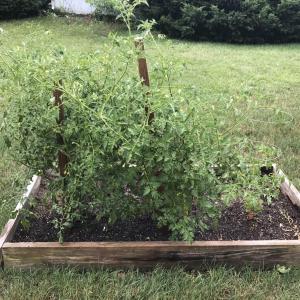
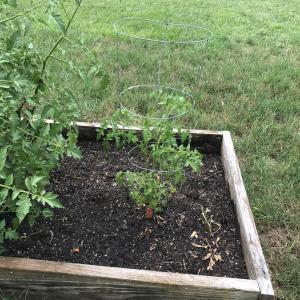
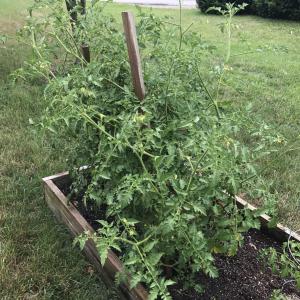

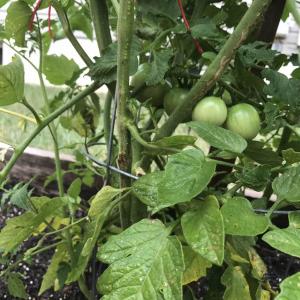
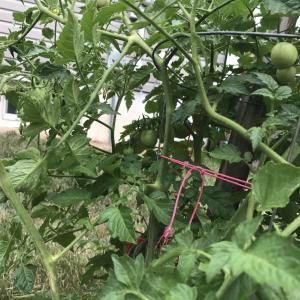
#Tomato #gardening #easy #vegetables #bigred






1
0
Erin Rose
2017-05-28

I just bought a house and know NOTHING about gardening or taking care of plants. I am trying really hard and would like help identifying these plants so i can research how to take care of them!
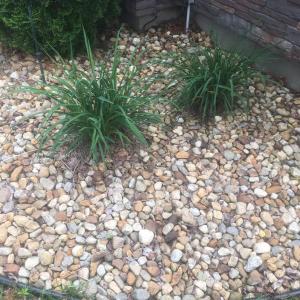
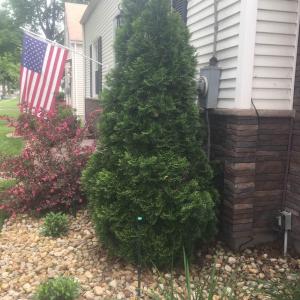
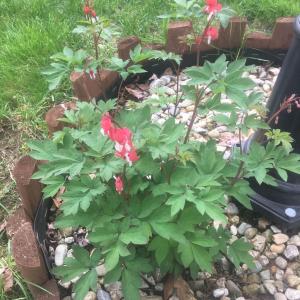
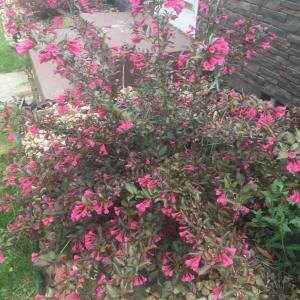
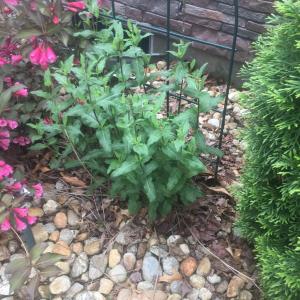
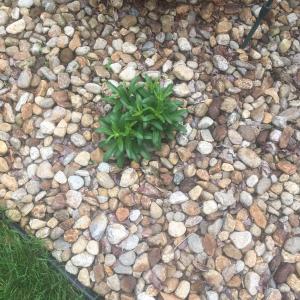
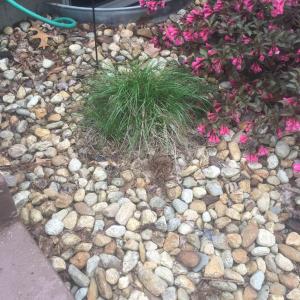
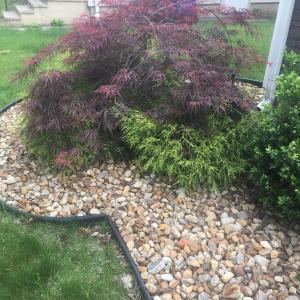
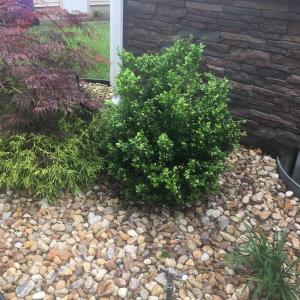









1
0
GFinger
2016-07-19

TIPS📝
We take an interest in gardening for a variety of reasons—higher quality produce, exercise in the great outdoors etc.
When you're just getting started, gardening can be intimidating.GFinger will help you learn the basics, starting with these steps.
Step 1: Gather Your Gear
Proper tools provide us more comfort and efficiency, which means less work for us!
Here's what you'll need to get started.
1 Trowel - Used for weeding and digging small holes.
2 Gardening gloves - As much as we like getting our hands dirty, we don’t like getting them that dirty. A good pair of gloves can also protect your hands from bugs and prickly plants and weeds.
3 Sun hat - For UV protection, make sure this is wide-brimmed and cinches.
4 Watering can or hose – What you need will vary depending on your garden’s water needs and proximity to your water source.
5 Wheelbarrow - For larger gardens, you'll need one to transport mulch, dirt, and compost.
6 Roundhead shovel - For digging larger holes.
7 Rake - Ideal for spreading mulch, and gathering or transporting debris that has collected around your garden and between plants.
8 Shears - Use to prune away browning leaves or snipping herbs.
9 Pitchfork - This is an essential tool if you are creating a compost heap or pile.
Continued…



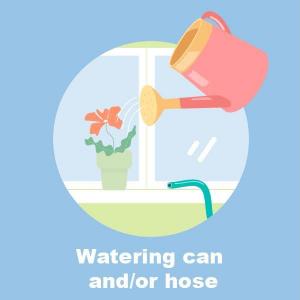
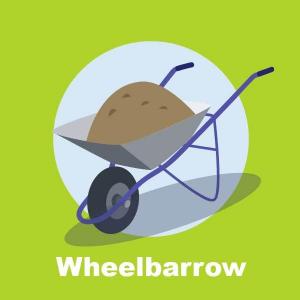




We take an interest in gardening for a variety of reasons—higher quality produce, exercise in the great outdoors etc.
When you're just getting started, gardening can be intimidating.GFinger will help you learn the basics, starting with these steps.
Step 1: Gather Your Gear
Proper tools provide us more comfort and efficiency, which means less work for us!
Here's what you'll need to get started.
1 Trowel - Used for weeding and digging small holes.
2 Gardening gloves - As much as we like getting our hands dirty, we don’t like getting them that dirty. A good pair of gloves can also protect your hands from bugs and prickly plants and weeds.
3 Sun hat - For UV protection, make sure this is wide-brimmed and cinches.
4 Watering can or hose – What you need will vary depending on your garden’s water needs and proximity to your water source.
5 Wheelbarrow - For larger gardens, you'll need one to transport mulch, dirt, and compost.
6 Roundhead shovel - For digging larger holes.
7 Rake - Ideal for spreading mulch, and gathering or transporting debris that has collected around your garden and between plants.
8 Shears - Use to prune away browning leaves or snipping herbs.
9 Pitchfork - This is an essential tool if you are creating a compost heap or pile.
Continued…









6
0


